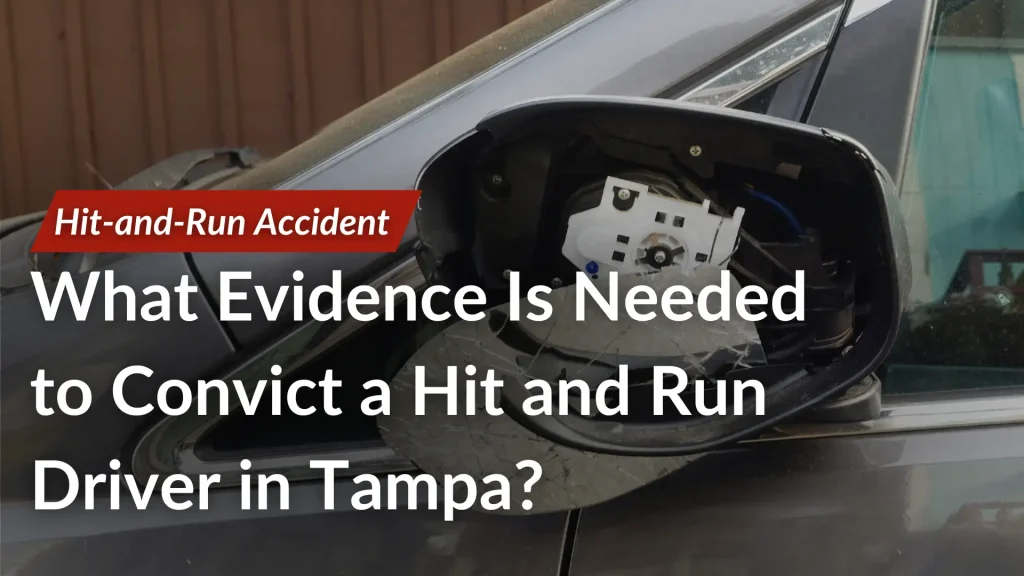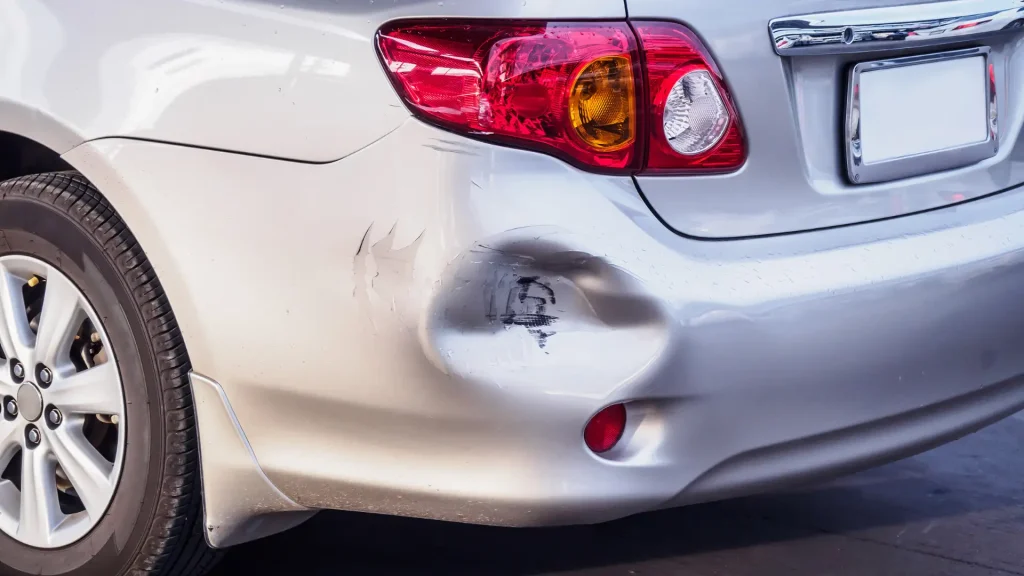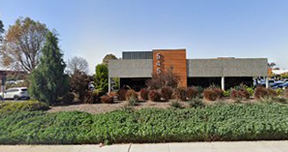
According to data from the Florida Department of Highway Safety and Motor Vehicles, there are over 100,000 hit-and-run auto accidents in Florida annually. Leaving the scene of an accident after a car crash is a crime in Florida and can carry steep criminal penalties.
However, it can be challenging to get a hit-and-run conviction when the identity of the fleeing driver is unknown. The police and investigators will have to identify the driver and procure evidence showing they were at the accident scene and left. Hit-and-run accident victims can still pursue compensation, which is why understanding what evidence is needed to convict a hit-and-run driver, such as surveillance footage, eyewitness statements, and vehicle damage, is so important for holding the at-fault party accountable.
What Is a Hit and Run in Florida?
Florida Statutes 316.062 states that drivers involved in car accidents must pull over, render aid, and share their contact and insurance info with the other driver. If a driver flees the scene of an accident or refuses to provide their information, they are guilty of a hit and run, which is why knowing how do you prove a hit and run car accident with evidence like witness testimony, video footage, and vehicle damage is so important.
If the crash only involved property damage, you do not necessarily have to call the police. However, you must contact the authorities if the crash involves injuries or death. These hit-and-run laws also apply to collisions involving cyclists and pedestrians, not just other vehicles.
Burden of Proof in Hit and Run Cases
As with any criminal conviction, a hit-and-run conviction requires the prosecution to prove the defendant’s guilt beyond a reasonable doubt. Specifically, the prosecution must show:
- The defendant was involved in the crash
- The accident causes property damage, physical injuries, or death
- The defendant did not stop or provide their information after the accident
The burden of proof is on the prosecution to prove the defendant’s guilt. The defendant does not have to prove their innocence — only demonstrate the prosecution’s case doesn’t meet the burden of beyond a reasonable doubt.
What Counts as Evidence in a Hit and Run Case?
During a trial, the prosecution will present evidence that establishes the defendant is guilty of a hit and run. Examples of pertinent evidence the prosecution might provide include:
Physical Evidence
Physical evidence is among the strongest forms of evidence and includes tangible, concrete evidence linking the defendant to the crime scene. Physical evidence in a hit-and-run case could include:
- Skid Marks. Tire skid marks can indicate the type of vehicle and its speed and direction before and after an accident.
- Paint Chips. Paint chips that match the defendant’s car are a powerful piece of evidence linking them to where the accident occurred. Paint transfer on the victim’s car can also be traced back to the offending driver.
- Auto Parts. Debris and vehicle damage from the accident, such as a fender or side window, can help police identify the vehicle that fled and corroborate the claimed extent of the damage.
Surveillance Footage
Given the ubiquity of cameras and recording in the modern day, surveillance footage is an extremely common source of evidence for these types of accidents.
- CCTV footage. CCTV footage is a critical source of evidence for hit and run accidents. If the footage is clear enough, authorities may be able to identify the vehicle’s license plate number, driver’s face, and other identifying information.
- Vehicle data. Many modern vehicles have advanced monitoring and GPS systems that track location and other vehicle data. This type of data can prove that the defendant’s car was near the accident scene and how fast they were going.
- Other recordings. In some cases, third-party eyewitnesses may capture an accident on camera when recording something else.
Forensic Evidence
Forensic evidence and chemical analysis can provide a detailed picture of an accident scene and help experts recreate the events that transpired.
- DNA or blood. If blood or other sources of DNA were left at the accident scene, forensic analysis can determine whether they belong to the defendant.
- Glass and fibers. Glass shards and fiber can link the defendant’s car to the accident location. For example, fibers retrieved at the scene might be a match for the cloth seats in the defendant’s car.
- If the guilty party exited their car before leaving, they may have left footprints that could link them to the crime scene.
Eyewitness Testimony
Prosecutors frequently rely on eyewitness accounts to secure convictions, and hit-and-run cases are no different.
- Direct testimony. An eyewitness who directly witnessed the accident can describe what happened and the offending party’s vehicle.
- Suspect identification. Eyewitnesses can provide a physical description of the offending party, which can help identify the defendant and establish their guilt.
How Much Hit and Run Evidence Do You Need for a Conviction?
 The prosecution must prove the defendant was involved in a hit-and-run accident beyond a reasonable doubt. But what that entails differs from case to case. There is rarely one single piece of evidence that establishes guilt beyond a reasonable doubt. Instead, the prosecution builds to that conclusion by presenting multiple pieces of evidence and arguments.
The prosecution must prove the defendant was involved in a hit-and-run accident beyond a reasonable doubt. But what that entails differs from case to case. There is rarely one single piece of evidence that establishes guilt beyond a reasonable doubt. Instead, the prosecution builds to that conclusion by presenting multiple pieces of evidence and arguments.
For example, eyewitness testimony alone may not be sufficient to convict, but eyewitness testimony coupled with surveillance footage and paint markings linking the defendant to the accident may be. As a general rule of thumb, the more evidence the prosecution has corroborating its version of events, the more likely it is to secure a conviction.
Tampa’s Trusted Source for Personal Injury Representation
Hit and run accident victims in Florida face numerous difficulties when attempting to recover financial compensation from an unidentified party. An experienced Tampa car accident attorney can investigate your case to identify hit-and-run drivers and hold them responsible under the law.
If you can show the at-fault driver is guilty of a hit and run, you may be able to pursue them for compensation for your medical bills, lost income, and pain and suffering. Our team is here to help you understand your rights and take the first step toward securing the necessary benefits. Call Jurewitz Law Group Injury & Accident Lawyers at (619) 233-5020 or contact us online to receive a free case consultation with a personal injury attorney in Tampa, Florida.
Related Post
What to Do If an Insurance Company Denies Your Injury Claim
Common Injuries after a San Diego Motorcycle Hit-and-Run Accident


